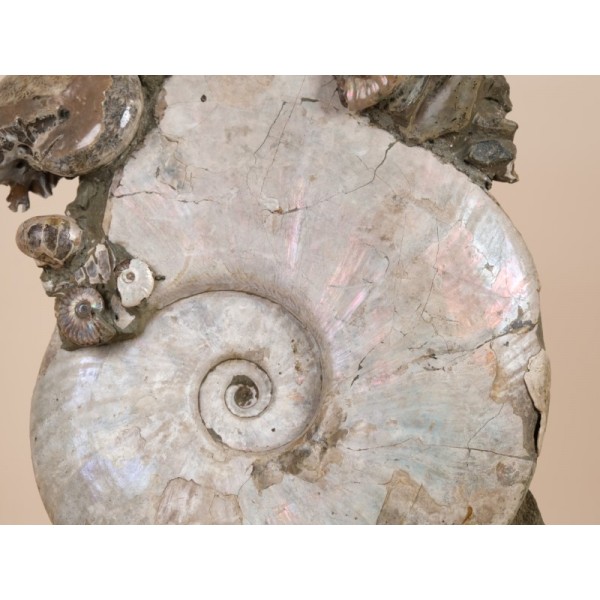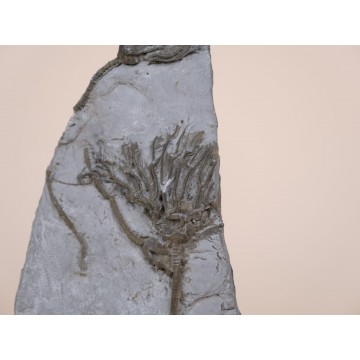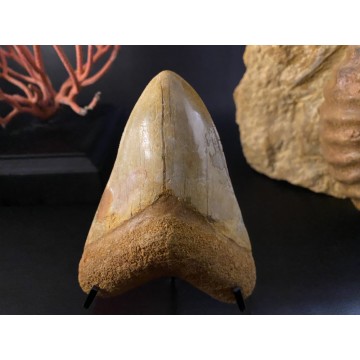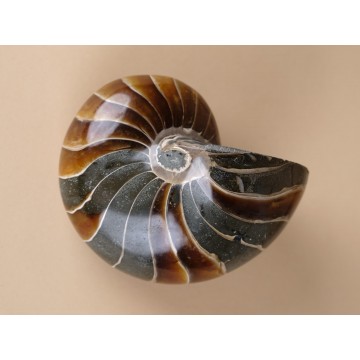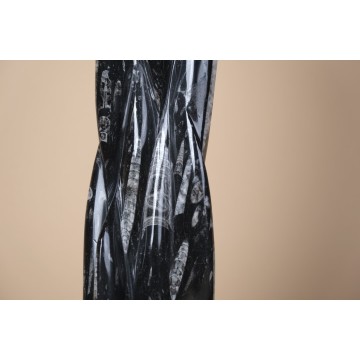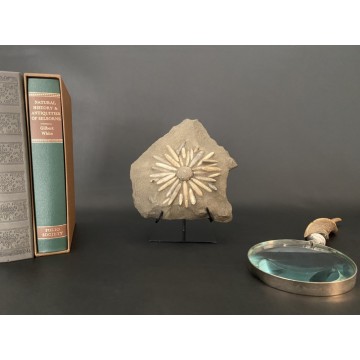Aioloceras besairie
Ammonite sliced - Cristal clusters - mounted on a handmade brass stand.
Aioloceras besairie (>140mm) Lower Cretaceous, Albian (100.5–113.0 million years), from Mahajanga, Madagascar.
These ammonite sliced in two parts has been polished for showing the breathtaking inside colors and patterns.





